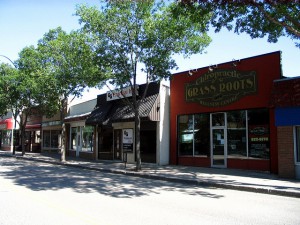

In recent years, more than a quarter of residents in metropolitan areas have been immigrants, a figure that plummets to only five per cent in small towns. Canada’s three largest cities — Toronto, Montreal, and Vancouver — together accounted for nearly two-thirds of the immigrant population of Canada. In contrast, only one-third of Canada’s total population lived in these cities, showing a disparity in immigrant and non-immigrant populations between urban and rural areas.
Some small rural communities, however, are hopeful of reversing this trend by identifying the immigrants they wish to attract based on local labour market needs. By consulting with local employers and promoting candidates for immigration through the Provincial Nominee Program, rural communities are increasingly planning strategies that aim to guarantee the long-term success of their towns, both from an economic and community point of view. The Provincial Nominee Programs consider a person’s application based on, among other factors, his or her genuine intention to settle in that province. This aspect of the programs has led some small towns to launch initiatives aimed at sourcing the highest quality immigrants to their communities.


One such rural community is Morden, a small town of around 9,000 people in Southern Manitoba, lying 112 km southwest of the provincial capital of Winnipeg. With an unemployment rate of 3.1%, local employers struggle to find enough workers. Morden’s Community Driven Immigration Initiative aims to aid employers through an active recruitment campaign. Applicants for the Morden initiative make an application through the Manitoba Provincial Nominee Program (MPNP).
While most rural communities in Canada take a more passive role in attracting immigrants — for example, by observing which newcomers are arriving to the given province and only then hoping to attract them to their respective town — Morden is taking a much more active role. For its part, Morden identifies potential newcomers to the town before they make their PNP application, rather than after.
“The program has been very successful,” says Community Development Officer, Cheryl Digby. “Employers are supporting the program by offering jobs to newcomers, developers have plans for housing complexes to house the new arrivals, and the community at large has opened their hearts to new friends.
“Our retention rate has remained high, as applicants are chosen specifically for their high chance of success in Morden. In particular, there are openings for applicants with experience in manufacturing such as woodworkers or cabinetmakers, welders, sewing factory workers or entrepreneurs who have business experience.”
Living costs in communities such as Morden are among the lowest in Canada, a factor that is likely to become more of a priority for newcomers to Canada as the cost of living in large Canadian cities grows faster than the rate of inflation.
Simcoe County, situated north of Toronto from Lake Simcoe to the shores of Georgian Bay, is another region actively looking for newcomers. The largely pastoral county has seen approximately 650 landed immigrants per year in recent years, but Sandra Lee, Project Manager at Simcoe County’s Local Immigration Partnership, has noticed a growing trend of immigrants moving from big cities to counties such as hers.
“Most of our growth is because people are landing and they’re moving after the fact,” said Lee following a panel at the Association of Municipalities of Ontario’s annual conference in August. “Recent settlement trends reveal that economic regions other than the GTA are receiving a larger share of Ontario immigrants and that the proportion of secondary migration to non-Census Metropolitan Areas is increasing.”
Last year Simcoe County launched an online immigration portal to help new arrivals, with a particular emphasis on immigrants with particular skills to meet local labour market needs. Rather than relying on immigrants moving from the big cities to more rural environments years after they have landed in Canada, the focus, like in the case of Morden, is increasingly turning towards attracting more landed immigrants directly. With a stagnant population growth rate, Simcoe County is one of many rural regions that has identified immigration as part of the solution. Future job opportunities will require skilled workers, and immigrant talent will be an important component of the county’s future.
The Prognosis
“In the earlier part of her history, Canada made use of skilled newcomers moving to rural areas to address labour shortages and take advantage of the potential of the land,” says Attorney David Cohen.
“Much of Western Canada, for example, was settled by immigrants from Eastern Europe after a government recruitment campaign. While current federal immigration policies do not explicitly identify any particular region or target group, it appears likely that rural areas, after decades of losing out to Canada’s cities in attracting skilled international labour, will take a progressively active role in the immigration process. This is potentially a win-win for the communities and newcomers alike, as well as for the diversity and continued economic success of Canada. When small rural communities actively identify people who are more likely to fit in and succeed, this creates growth and reduces the burden on big cities.”
To find out if you are eligible for a Provincial Nominee Program or any other of over 60 Canadian immigration programs, please fill out a free online assessment today.
© 2014 CICnews All Rights Reserved
